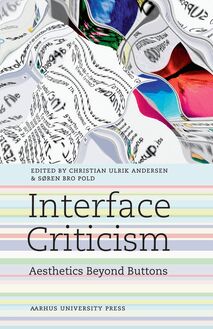From the screen of our laptops, and from the ubiquitous portable devices, smart phones, and media players, to the embedded computation in clothes, architecture and big urban screens, interfaces are everywhere. They are simultaneously demanding our attention and computing quietly in the background, turning action into inter-action, and mediating our experience of and relations to the social and environmental. But how can aesthetics respond to this, and how do interfaces set the scene for artistic practices? Interface Criticism is not another design manual but a critical investigation for readers interested in the aesthetic, cultural and political dimensions of interfaces. With contributions from leading researchers within the field, the book covers a wide range of aesthetic expressions - including urban screens, wearable interfaces, performances, games, net-art, software art, and sound art, and discusses how new cultures evolve around, for example, open souce or live coding. The volume critically investigates the aesthetics of interfaces in ways that transcend the iconic surface of the graphical user interface and goes beyond the buttons. Ultimately the book develops interface aesthetics as an appropriate paradigm for a critical discussion of the computer.
Voir




